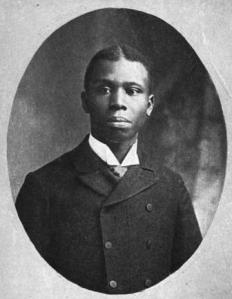

Although Paul Laurence Dunbar was only 33 years old when he died of tuberculosis on February 9, 1906, he left behind a lasting legacy of poems, short stories, and novels. The eldest son of former Kentucky slaves, Dunbar published his first poems in his hometown newspaper at the age of sixteen. His first collection of poetry, Oak and Ivy, was published in 1893. While much of his poetry was written in traditional English verse, Dunbar achieved widespread popularity for writing in African American vernacular dialect. Several volumes of Dunbar’s poetry like Poems of Cabin and Field (1899), Candle-Lightin’ Time (1901), When Malindy Sings (1903), and Li’l’ Gal (1904), shown here, featured full-page, black-and-white photographs taken by the Hampton Institute Camera Club, with whom Dunbar frequently collaborated to illustrate his verse. The hundreds of photographs in these books have significant cultural value as representations of rural African American life at the beginning of the twentieth century.

Several volumes of Dunbar’s poetry are included in the John MacKay Shaw Collection of Childhood in Poetry. In his short life, Dunbar spoke with passion, humor, and elegance of the human experience, inspiring later writers such as Maya Angelou, who titled her autobiography after lines from Dunbar’s poem Sympathy: